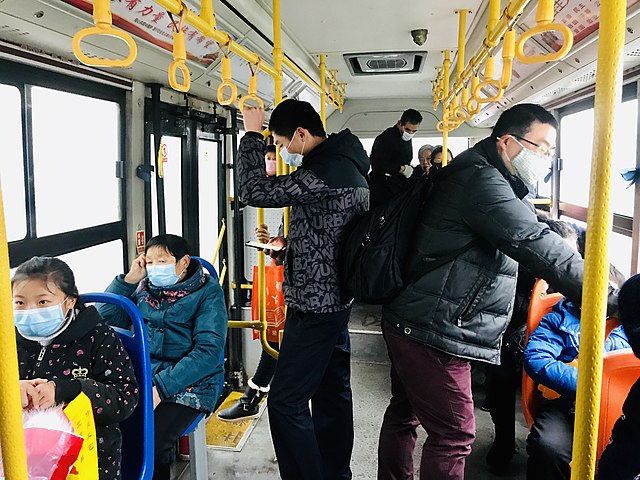COVID-19 pandemic in mainland China
The COVID-19 pandemic in mainland China is part of the worldwide pandemic of coronavirus disease 2019 (COVID-19) caused by severe acute respiratory syndrome coronavirus 2 (SARS-CoV-2). China was where the first COVID outbreak occurred, the first where authorities imposed drastic measures in response, and was one of the first countries to bring the outbreak under control, at least temporarily.
Staff examining cars for epidemic control at Qujiang entry to Xi'an Bypass
Body temperature screening at Jishuitan subway station, Beijing
Most people on a bus wearing a mask, Hubei province, 23 January 2020.
Since 25 January 2020, all passengers entering or exiting mainland China in Beijing, Shanghai and Guangdong must write a health declaration where the individual must answer whether they have been to Hubei Province. This declaration form can also be filled by using WeChat.
Chinese government response to COVID-19
During the COVID-19 pandemic in mainland China, the government of China under CCP general secretary Xi Jinping's administration pursued a zero-COVID strategy to prevent the domestic spread of COVID-19 until December 7, 2022. Aspects of the response have been controversial, with the zero-COVID approach being praised and the government's lack of transparency, censorship, and spread of misinformation being criticized. The government abandoned its zero-COVID policy on 7 December 2022.
A screen display in Hefei showing "early detection, early reporting, early quarantine, early diagnosis, early treatment" during the COVID-19 pandemic
Wuhan residents buying vegetables at a market after the lockdown was announced
Construction site of Huoshenshan Hospital as it appeared on 24 January
The Australian team pictured with local staff at the 2022 Winter Paralympics. All wear personal protective equipment in adherence with China's bio-secure bubble at the event.








